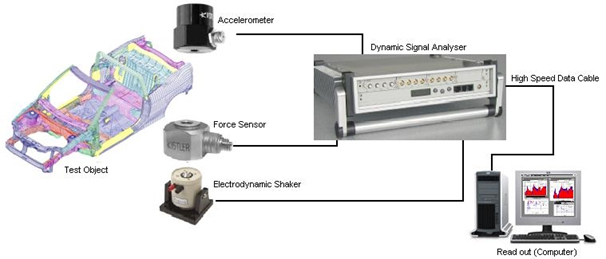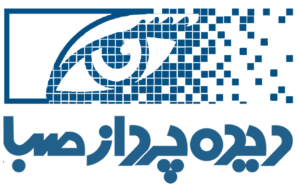آنالیز مودال تجربی و عملیاتی (EMA/OMA)
آنالیز مودال یکی از ابزارهای اصلی برای بررسی دینامیک سازهها است. در این روش، رفتار پیچیدهی سازهها با استفاده از مودهای طبیعی سازه که شامل فرکانس طبیعی، شکل مود و ضریب میرایی است بیان میشود. لذا از آنالیز مودال استفاده میشود تا مدل مودال یک سازه استخراج شود. سپس با استفاده از این مدل میتوان طراحی، عیبیابی و تحلیل سازهها را انجام داد.

آنالیز مودال در بسیاری از صنایع از جمله خودروسازی، هوا-فضا، حمل و نقل ریلی، محصولات خانگی، نفت، گاز و پتروشیمی، وسیمان قابل استفاده است. بعضی از کاربردهای این روش به شرح زیر است:
- عیبیابی: پیدا کردن فرکانسهای تشدید و تلاش برای دور کردن فرکانس نیروهای کاری از آنها
- اعتبارسنجی مدلهای المان محدود
- اصلاح دینامیک سازهها با استفاده از مدل مودال استخراج شده و بررسی اثر تغییرات سازهای بر روی عملکرد سازه
- پیشبینی پاسخ سازه در اثر نیروهای اعمال شده به آن با استفاده از مدل استخراج شده
- بدست آوردن نیروهای وارد شده به سازه با استفاده از حل مسأله وارون با داشتن مدل مودال و پاسخ سازه
- کنترل فعال ارتعاشات: استفاده از مدل مودال برای طراحی کنترلکننده و مشاهدهگرها


آنالیز مودال تجربی (Experimental Modal Analysis) و آنالیز مودال عملیاتی (Operational Modal Analysis) شامل دو مرحله انجام تست و استخراج دادهها، و تحلیل و بدست آوردن مدلهای ریاضی با استفاده از دادههای بدست آورده شده است. تجهیزاتی از جمله چکش، لرزاننده (شیکر) الکترومغناطیسی، شتابسنج و سنسور نیرو برای تست مورد نیاز میباشد. تفاوت EMA و OMA در این است که OMA نیروهای ورودی و اعمالی به سازه اندازهگیری نمیشود. معمولا برای سازههای بزرگ که امکان تحریک کردن سازه وجود ندارد از نیروهای طبیعی که حین کارکرد به سازه وارد میشود به عنوان تحریک استفاده میشود.

لازم به ذکر است از شتابسنجهای ساخت شرکت دیده پرداز صبا مانند شتابسنج مینیاتوری و شتابسنج شبکه، میتوان برای انجام آنالیز مودال تجربی و عملیاتی در آزمایشگاهها و صنایع مختلف استفاده کرد. این دو نوع شتابسنج، قابلیت این را دارند که تعدادی از آنها به بر روی سازه نصب شده و به صورت سنکرون (synchronous) ارتعاشات را اندازهگیری کنند. مزیت شتابسنج مینیاتوری در جرم کم آن است که برای سازههای سبک بسیار با اهمیت است زیرا تغییری در مشخصات دینامیکی سازه ایجاد نمیکند.
برای اندازهگیری ارتعاشات به صورت همزمان میتوان از آنالایزر ارتعاشی ساخت شرکت دیدهپرداز صبا استفاده کرد.

 تجهیزات آنالیز مودال
تجهیزات آنالیز مودال
 شتابسنج مینیاتوری
شتابسنج مینیاتوری شتابسنج شبکه
شتابسنج شبکه